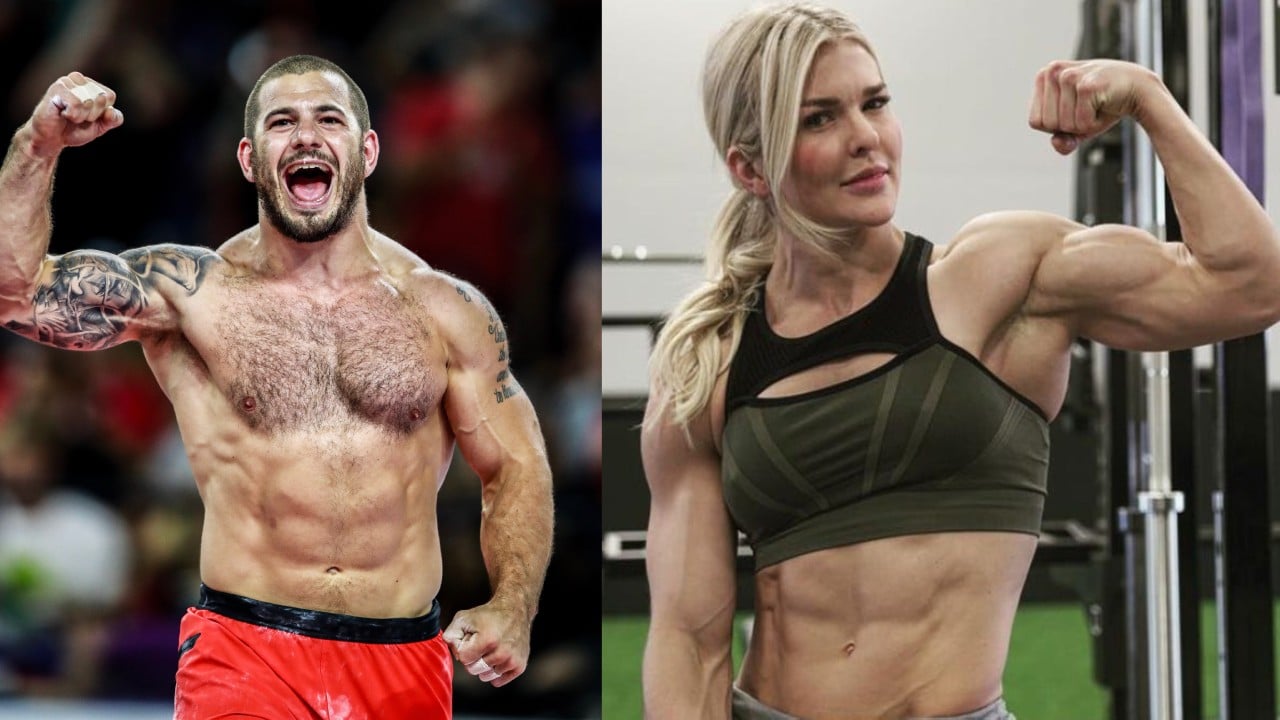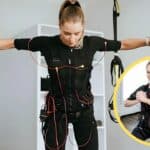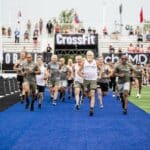Today I take you through the average bicep size, and how age, gender, height, and weight can influence their circumference.
Get insights into the impressive biceps of renowned bodybuilders and understand what a ‘big’ bicep really means.
Ideal for fitness enthusiasts and those curious about muscle health, this guide is also packed with practical tips for bicep growth.
Related: Discover the average forearm, chest and calf size.
Jump to:
Understanding Biceps Size
In measuring your own fitness progress or understanding common health indicators, the size of your biceps can be a telling detail. It reflects not just aesthetic appeal but also muscular health and function.
Anatomy of the Biceps
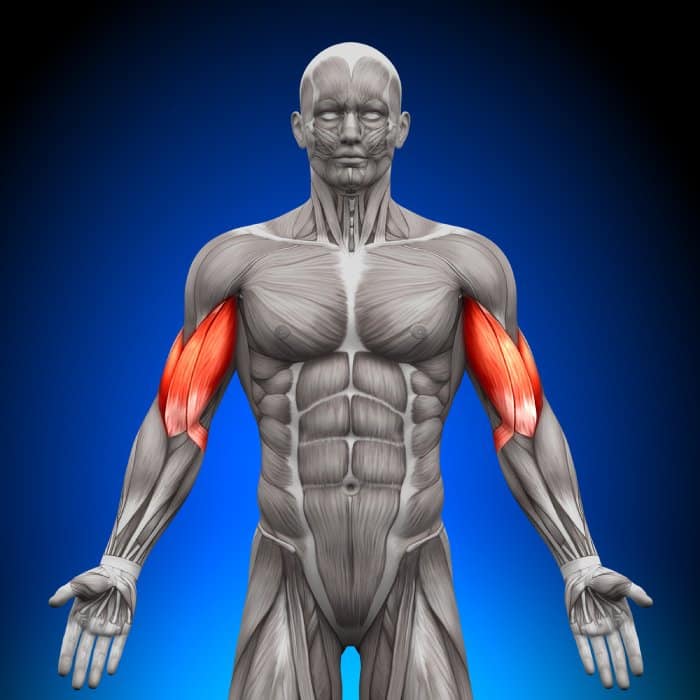
Your biceps, formally known as the biceps brachii, are a prominent muscle group in the upper arm. The anatomy of your biceps includes two heads: the long head and the short head. Each has a specific point of origin at the shoulder blade and converges to one common tendon that attaches at the bicipital tuberosity on the radius.
- Long Head: Starts from the supraglenoid tubercle.
- Short Head: Begins at the coracoid process of the scapula.
Both heads work together to perform various functions, including the flexion and supination of the forearm. Your arm circumference is greatly influenced by the size of your biceps muscle, which can be augmented through targeted exercises that stimulate the muscle fibers within the biceps brachii.
Biceps Brachii and Muscular Function
Your biceps muscle plays a pivotal role in both daily activities and specific exercises. The primary functions of the biceps brachii muscle include:
- Flexion of the elbow: Allowing you to bring your forearm towards your shoulder.
- Supination of the forearm: Enabling you to rotate your forearm so your palm faces upwards.
The biceps size is not just a matter of appearance; it is indicative of the strength and health of the muscle fibers that contribute to these functions. The muscle mass in the biceps can increase with resistance training, which typically involves weights and various forms of curls.
Average Biceps Size For Men (by Age)
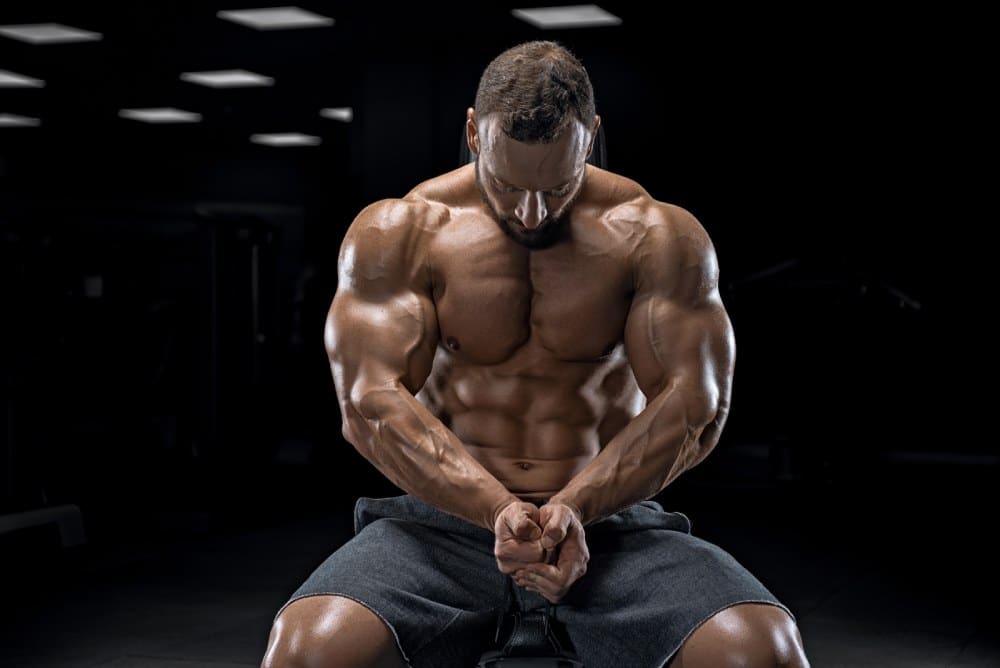
For biceps size, it’s essential to recognize that it can vary significantly based on several factors including age. For men, it’s common to see changes in muscle mass and size as they age.
Here’s a chart that shows the average bicep size, by age, for men (According to the CDC – Centers for Disease Control and Prevention):
| Age | Average biceps size in inches |
|---|---|
| 20–29 | 13.3 |
| 30–39 | 13.8 |
| 40–49 | 13.9 |
| 50–59 | 13.5 |
| 60–69 | 13.4 |
| 70–79 | 12.9 |
| 80+ | 12.1 |
In younger adulthood, particularly in the 20s to 30s, men’s biceps are usually at their peak in terms of size and strength due to higher natural testosterone levels. It’s the time when men can more easily pack on muscle with resistance training and maintain it with regular physical activity.
Moving into the 40s and 50s, some degree of muscle loss might begin to occur unless efforts are made to engage in resistance training and maintain an active lifestyle. During this period, the biceps might reduce slightly in size on average, compared to the peak years.
For men over 60 years old, the muscle fiber number in the biceps brachii muscle can decline, which is linked to a reduction in overall muscle size and strength. This decline can be mitigated but not wholly prevented through strength training and an active lifestyle.
Average Biceps Size by Age for Women
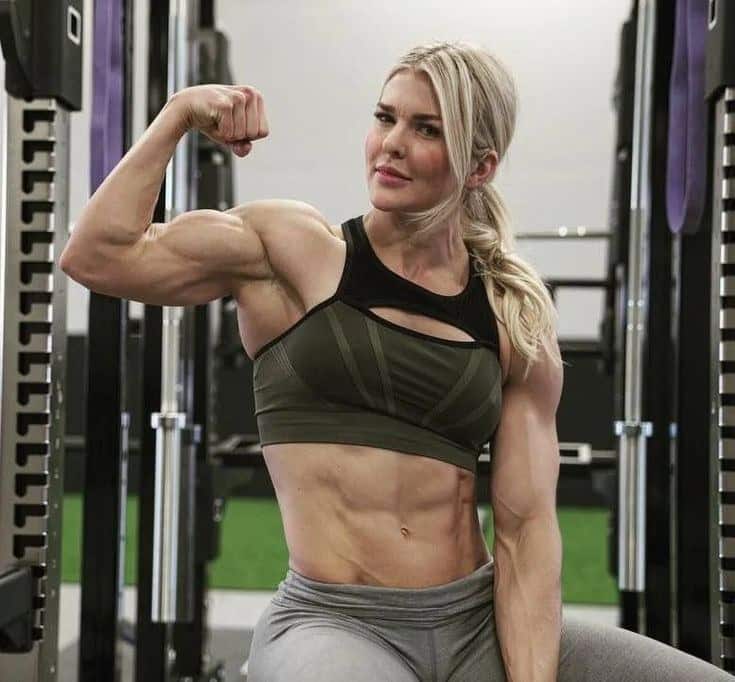
When considering the average biceps size for women, it’s important to note that muscle mass can vary based on several factors, including age. Biceps size is often a reflection of body composition and physical conditioning.
Here’s a chart that shows the average bicep size, by age, for women (According to the CDC – Centers for Disease Control and Prevention):
| Age | Average biceps size in inches |
|---|---|
| 20–29 | 12.4 |
| 30–39 | 12.9 |
| 40–49 | 12.9 |
| 50–59 | 12.9 |
| 60–69 | 12.7 |
| 70–79 | 12.6 |
| 80+ | 11.4 |
In adolescents and women in their twenties, the average biceps size may fall within a range that reflects active muscle development. However, as women age, there may be a gradual decrease in muscle mass and a potential reduction in average biceps size. The variance in size can also relate to overall body mass index (BMI) and changes in physical activity levels.
For women in mid-adulthood, from their thirties to fifties, the focus might shift towards muscle maintenance and toning. It is common in this age bracket to witness a change in muscle composition and potential size reductions. This is due to factors like hormonal changes and lifestyle adjustments.
In older adults, those in their sixties and beyond, maintaining muscle mass becomes more challenging due to natural aging processes. Average biceps size may further decrease, and strength training becomes crucial for muscle preservation.
A Look At Different Bicep Sizes
I tried to gather pictures representing various bicep sizes to give you an overview. What’s obvious is that depending on your weight and height, body fat, etc, your bicep size will look very different. But here are a few examples:
14 inches

14,5 inches

15 inches

16 inches

17 inches

18 inches

19 inches

21 inches

22 inches

24 inches

25 inches

31 inches 😂

Now unless you use Synthol , good luck achieving 30+ inches (nor that there’s any good reason for you to…)
Average Bicep Size by Height and Weight
Understanding the Correlation
While age and gender are significant determinants of bicep size, height and weight also play a crucial role. The proportion of muscle mass in relation to body size can cause variations in bicep circumference. This section explores how height and weight may influence average bicep sizes.
Bicep Size Relative to Height
Taller Individuals: Generally, taller individuals have longer limbs, which can lead to larger muscle groups. However, this does not always translate to larger biceps, as the muscle may be more stretched out over a longer bone structure.
Shorter Individuals: Shorter individuals might have a more compact muscle structure, potentially leading to a more pronounced bicep size, especially if they engage in targeted strength training.
Bicep Size in Relation to Weight
Heavier Individuals: Those with higher body weight, especially if the weight comes from muscle mass, are likely to have larger biceps. However, if the weight is primarily due to fat, this may not significantly affect bicep muscle size but can affect the overall arm circumference.
Leaner Individuals: Leaner people might have smaller bicep circumferences, but this does not necessarily mean weaker muscles. Lean muscle mass can be dense and strong, even if the overall arm size is smaller.
Famous Bodybuilders and Their Bicep Sizes
Bodybuilding has seen many iconic figures who have set standards in muscular development and aesthetics. In this section, we will highlight some renowned bodybuilders, focusing on their remarkable bicep sizes which have contributed to their legendary status in the sport.
Ronnie Coleman
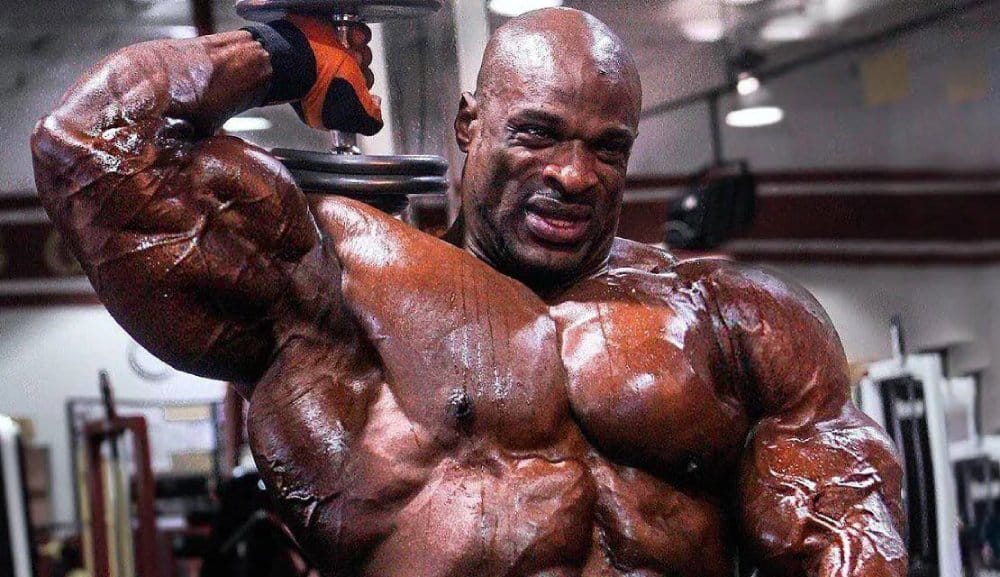
- Bicep Size: Approximately 24 inches.
- Accomplishments: Coleman, recognized for his incredible mass and strength, has won the Mr. Olympia title eight times, tying with Lee Haney for the record.
Arnold Schwarzenegger
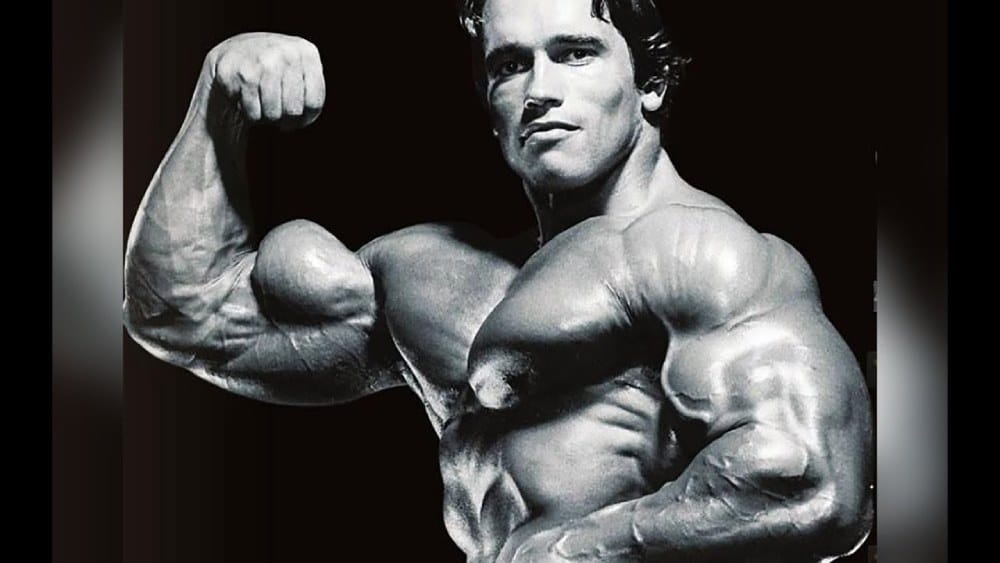
- Bicep Size: Around 22 inches at his peak.
- Legacy: Known for his impressive physique and symmetry, Arnold’s biceps were among his most notable features, contributing to his multiple Mr. Olympia titles.
Lee Haney
- Bicep Size: Around 21 inches.
- Notable Achievements: With a combination of size and aesthetics, Haney dominated the bodybuilding scene in the 1980s, winning eight consecutive Mr. Olympia titles.
Dorian Yates
- Bicep Size: About 21 inches.
- Contribution to Bodybuilding: Yates, known for his high-intensity training approach, brought a new level of muscle density and conditioning to the sport, winning six Mr. Olympia titles.
Jay Cutler
- Bicep Size: Roughly 22.5 inches.
- Highlights: Cutler, known for his rivalry with Ronnie Coleman, won the Mr. Olympia title four times. His biceps were among his most impressive body parts.
Phil Heath
- Bicep Size: Approximately 23 inches.
- Distinction: Heath, known as “The Gift,” has won seven Mr. Olympia titles. His arm development, particularly his biceps, is considered among the best in bodybuilding history.
Frank Zane
- Bicep Size: Around 18 inches.
- Unique Aspect: Despite having smaller biceps compared to other bodybuilding legends, Zane was famous for his symmetry and proportion, winning Mr. Olympia three times.
What’s Considered a Big Bicep?
When discussing arm size, big biceps are often viewed as a symbol of strength and fitness. But what size is considered “big”? For adult males, having biceps with a circumference over 16 inches is often seen as above average, especially when they’re well-defined and not covered by a significant layer of body fat.
For females, the bicep size considered big is generally less due to natural differences in body composition. Here, anything above 14 inches can be regarded as significantly larger than average.
It’s essential to note that the concept of big biceps can vary based on the community or context. In bodybuilding, for example, the standards for what constitutes a large bicep size can be considerably higher.
- For competitive bodybuilders: Over 18 inches might be considered the norm.
- In the general fitness community: A circumference approaching 17 inches for men could be seen as quite large.
Lean Muscle Versus Fat
- Big biceps should display lean muscle rather than a blend of muscle and fat.
- Definition and low subcutaneous fat give the bicep a larger and more impressive appearance.
Measurement Method
- Measure your biceps at their largest point while relaxed for a true size.
- Measure again with your biceps flexed to get an idea of their muscular potential.
Factors Affecting Biceps Size
Your biceps size is not solely the result of your workouts; it’s influenced by a combination of genetics, diet, and specific training regimens.
Influence of Genetics and Body Composition
Genetics play a pivotal role in determining the natural size and strength of your biceps. Your body composition, which includes the proportion of muscle to fat, can also dictate how large your biceps can grow. Body composition is influenced by factors like metabolic rate and muscle fiber type, which are largely determined by genetics.
Impact of Training and Diet
Your approach to training is crucial to increasing your biceps size. Weightlifting exercises targeting the biceps, such as curls and chin-ups, are necessary to stimulate muscle growth. Consistency, along with gradually increasing the intensity of workouts, fosters muscle hypertrophy.
Diet and nutrition are equally important—without proper fuel, your muscles can’t grow. A balanced diet high in protein is essential for muscle repair and growth. Protein intake should be paired with adequate carbohydrates and fats, as well as micronutrients, to ensure comprehensive nutrition supporting muscle growth.
Measuring Biceps
Measuring the size of your biceps is typically done to assess muscular development or to monitor changes in muscle size over time. Accuracy in biceps measurement is crucial as it is commonly used as an indicator of overall physical fitness or the effectiveness of a training regime.
Methods for Assessing Biceps Circumference
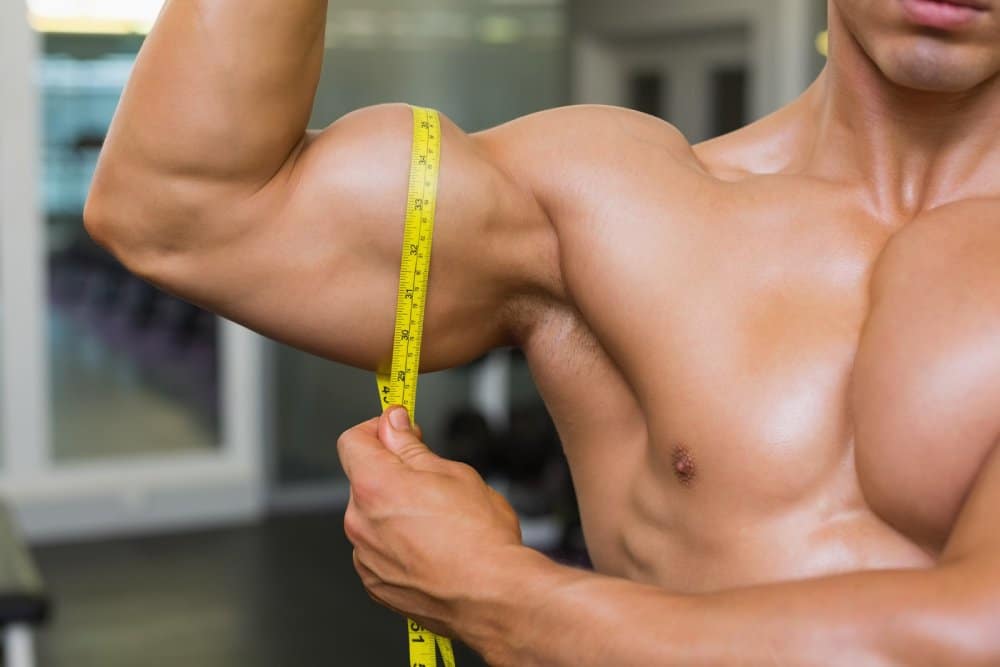
To obtain an accurate measure of your biceps circumference, it is essential to follow standardized methods.
- Prepare Your Measuring Tool: A flexible tape measure is the most suitable tool for this task.
- Position Your Arm Correctly: Your arm should be relaxed and at your side. Ensure that the muscle is not flexed during the measurement.
- Identify the Measurement Point: Locate the midpoint between the shoulder and the elbow. This is generally the largest part of the biceps.
- Wrap the Tape Measure: Gently wrap the tape measure around your arm at the identified midpoint, making sure that the tape is level and snug but not compressing the skin.
- Read the Measurement: Look at the point where the tape measure overlaps and record the circumference. For consistency, measure to the nearest 0.1 centimeter.
Remember, repeat measurements should be taken at the exact same location on the arm for valid comparisons over time. Consistency in the measurement method is key to tracking your progress accurately.
How to Increase Bicep Size
To effectively increase the size of your biceps, you need to adhere to targeted training routines and support muscle growth with proper nutrition. This dual approach ensures optimal development of your biceps through consistent workouts and by fueling your body with the building blocks it needs for muscle repair and growth.
Effective Training Routines
To maximize biceps growth, engage in a training program that includes a variety of resistance exercises. Incorporate compound movements like pull-ups and rows which work multiple muscles, including the biceps. Additionally, isolation exercises such as bicep curls and hammer curls specifically target bicep growth.
- Frequency: Train your biceps 2-3 times per week.
- Volume: Perform 3-5 sets of 8-12 repetitions for each exercise.
- Progression: Gradually increase the weight or resistance to continually challenge your biceps.
Supersetting exercises is an effective way to maintain intensity. For instance, pair bicep curls with tricep exercises for balanced arm development.
Nutritional Strategies for Muscle Gain
Your diet is vital in supporting muscle growth and recovery. Consume adequate protein, which is critical for muscle repair. Sources of high-quality protein include:
- Beef
- Fish
- Eggs
- Beans
- Nuts
Aim for a balanced diet with a caloric surplus to promote muscle mass increase, while minimizing excess fat tissue. Monitor your intake of macronutrients to ensure you’re getting enough protein while also including a variety of fruits, vegetables, and whole grains to provide essential micronutrients and fiber.
- Protein Intake: Aim for 1.6 to 2.2 grams of protein per kilogram of your body weight daily.
- Include healthy fats and complex carbohydrates to fuel your workouts and recovery.
In summary, your biceps will grow in size and strength with consistent training tailored to induce hypertrophy and a diet rich in protein and other nutrients to support muscle repair and growth.



